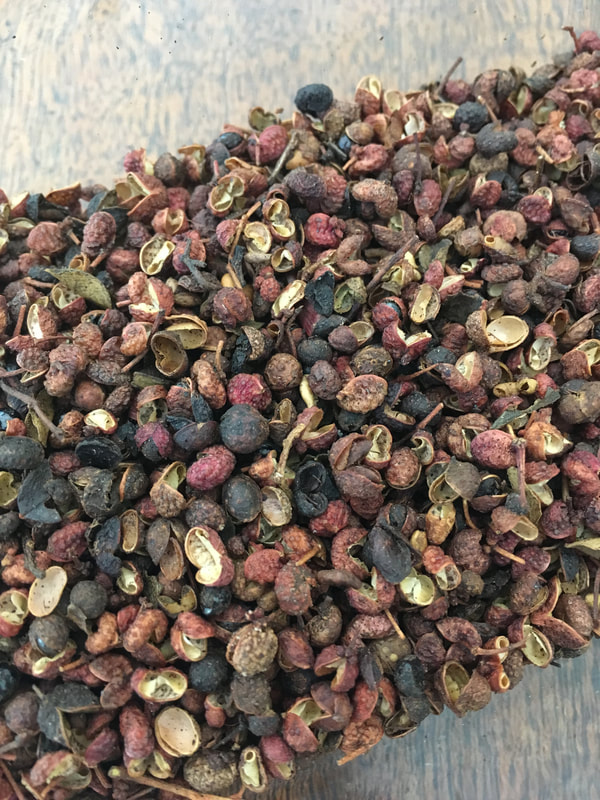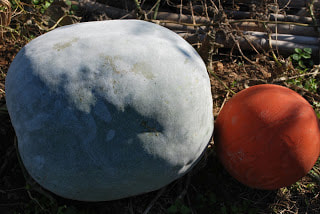|
I love kabocha pumpkins, and definitely prefer them over any field or pie pumpkin. These smaller five-pounders are a perfect size and are drier and have a nuttier flavor. Because they have a great smooth texture, they're just superior and excellent in any recipe. They're delicious roasted or mashed, and can be used in savory recipes like my mom's kabocha with ground pork in black bean sauce (available in The Chinese Kitchen Garden book), or in sweet recipes such as a classic American pumpkin pie or in cakes and other treats. I've even made some flavorful and creamy ice cream with kabochas in the past. One of my favorite desserts is the Thai sankaya - made by filling the hollowed out Kabocha with a coconut custard and then steaming the whole thing. Delicious and so pretty when served in slices!
Kabochas are easy to grow as long as you have some space in the garden and can usually be found in Asian supermarkets as well. You'll be a kabocha convert the first time you try it!
0 Comments
These are the beauts responsible for the spicy "mala" (ma - numbing, la - spicy) flavor in the noodle soup I posted about a couple weeks ago. We call it "fa ziu" in Cantonese, meaning "flower pepper". It really has a great fruity spiciness that leaves a short-lasting tingle on your tongue. These seed husks can be ground and added to the famous five-spice powder popular in Chinese cooking, or can flavor an oil that can easily be found in Asian supermarkets as well. A bag of these peppercorn husks is pretty cheap and can be found among the many other bags of dried stuff at your local Asian supermarket.
Cross-posted from Greenish Thumb, my other blog - November, 2012
Have you ever seen such a thing?! This is a winter melon, aka wax gourd, next to a full-size basketball!! The wax coating will help keep this melon fresh for months. Winter melon is mild and really juicy - perfect for adding to a light and tasty soup. White inside, once it's cooked, the winter melon takes on a beautiful translucency and the flavor of whatever it is cooked in. This is the melon that banquet chefs will carve in a bas-relief fashion, pour soup into and steam whole for a pretty darn showy presentation. Honestly though, I'm not sure what kind of steamer this particular winter melon could be cooked in! |
AuthorI'm Wendy Kiang-Spray, gardener, home cook, and author of The Chinese Kitchen Garden. Learn more about the book here. Enjoy the blog and be sure to like The Chinese Kitchen Garden Facebook page for notifications when there are new posts. Archives
April 2019
Categories
All
|



 RSS Feed
RSS Feed